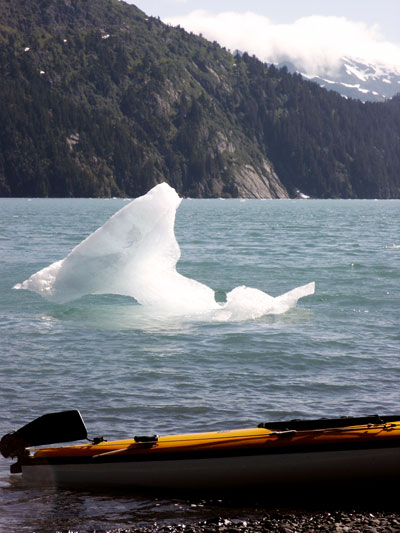This was our first big hunk of floating ice. A minute or so after I took this picture, the ice "calved" and we had two pieces of floating ice. I realized later that it wasn't just chance that the ice broke up then. The water and air gets significantly colder as you get closer to the glaciers, so as ice gets pushed further away, it melts faster and faster, and breaks up more often.
We paddled really hard that day! As we got closer to Icy Bay, the winds were significant off the glaciers (they're called katabatic winds), and were blowing right into our faces. As we entered Icy Bay, the tide was against us, and it was like paddling upstream against the wind. It felt like paddling through molasses, especially if your paddling partner took a break! As it got worse, we spent 45 minutes traveling a half mile, and finally pulled into a shallow cove to wait out the tide. (Just for reference, we usually paddled at 2-4 miles per hour.)
We were all so exhausted that we all crashed out right there on the beach on the rocks. PFDs make great pillows! We slept until the sun went behind the trees, and moved further down the beach to sleep some more... and so on, until there wasn't much beach left and the tide had mostly turned. It was a lot easier to paddle when we got out there again! Unfortunately, it was also a lot colder. The temperature dropped 10 degrees while we waited for the tide, and it didn't get warm again on that portion of the trip.





